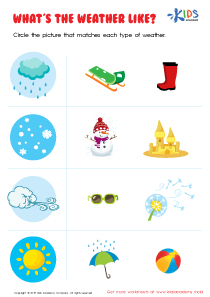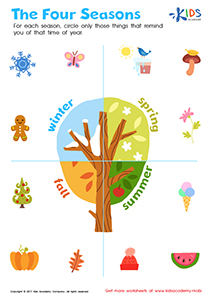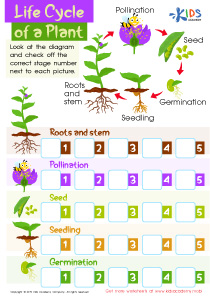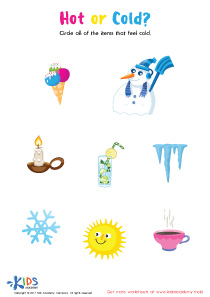Weather identification Normal World Around Us Worksheets for Ages 3-7
3 filtered results
-
From - To
Discover our engaging “Weather Identification Normal World Around Us Worksheets” designed specifically for ages 3-7. These printable activities help young learners explore and identify various weather conditions, enriching their understanding of the world around them. Featuring vibrant illustrations and simple prompts, the worksheets encourage children to recognize sunny, rainy, snowy, and windy days, fostering language skills and cognitive development. Perfect for home or classroom use, these resources promote interactive learning and are excellent for developing observation skills and vocabulary. Equip your little ones with essential knowledge about weather patterns while making learning fun and interactive! Ideal for early grade teachers and parents alike.
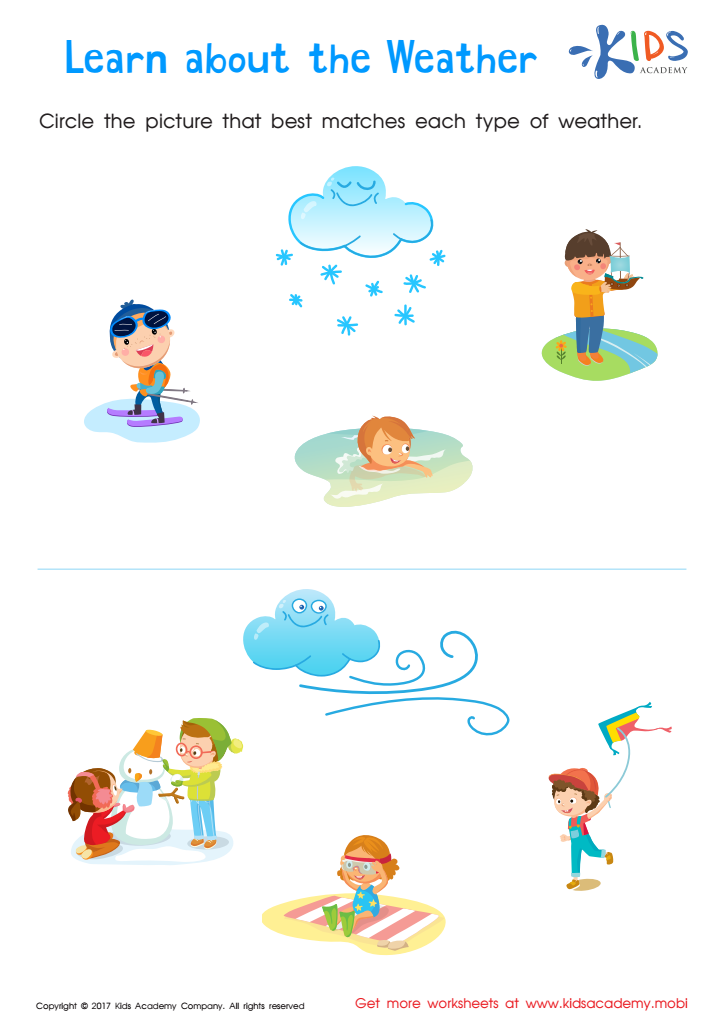

About the Weather Printable


What's the Weather Like? Worksheet
Understanding weather is crucial for young children aged 3-7 as it aligns with their natural curiosity about the world around them. Parents and teachers should prioritize weather identification to foster observation skills and engage children with their environment. By teaching children about different weather conditions—such as sunny, rainy, cloudy, and snowy—they develop vocabulary and improve language skills, bolstering communication abilities.
Moreover, weather education promotes safety awareness. For instance, understanding storms or extreme weather helps children learn how to react appropriately. It encourages discussion about how weather affects our activities and choices, such as appropriate clothing or outdoor playtime.
Engaging in weather-related activities, like creating crafts, observing nature, or conducting simple experiments, enhances hands-on learning and critical thinking. These experiences cultivate a sense of wonder and inquiry, reinforcing STEM concepts in an enjoyable manner.
Lastly, discussing weather introduces the idea of change and cycles—key concepts in both science and daily living. By integrating weather education into early learning, parents and teachers equip children with knowledge, stimulate social interactions, and spark an appreciation for the world around them, ultimately nurturing well-rounded individuals who become more aware and engaged citizens.

 Assign to My Students
Assign to My Students
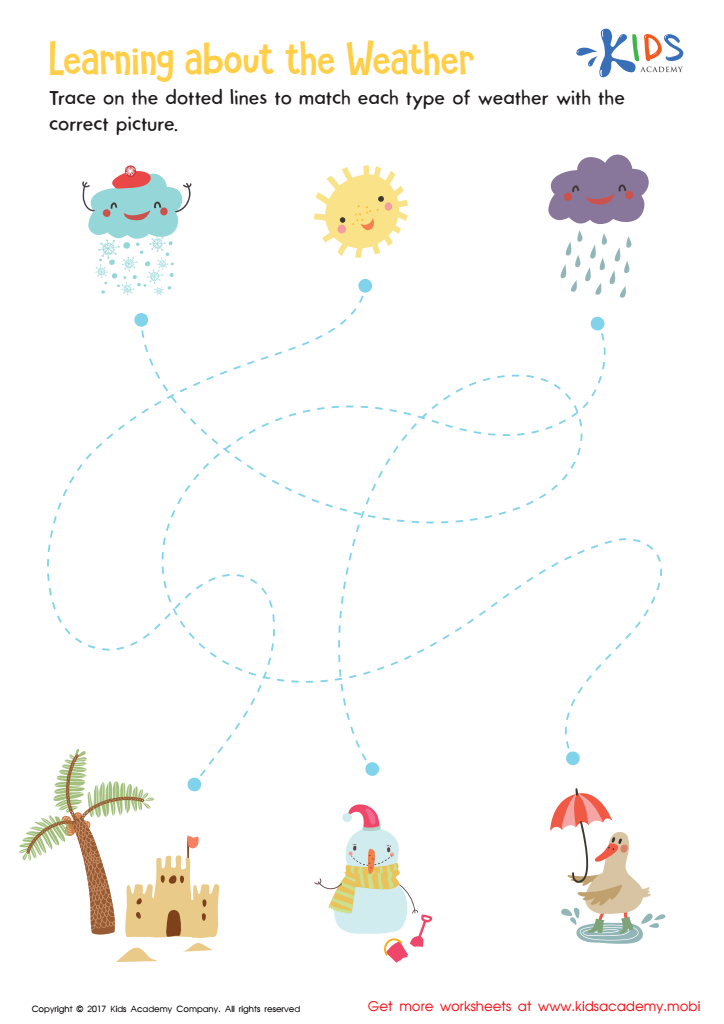




.jpg)



